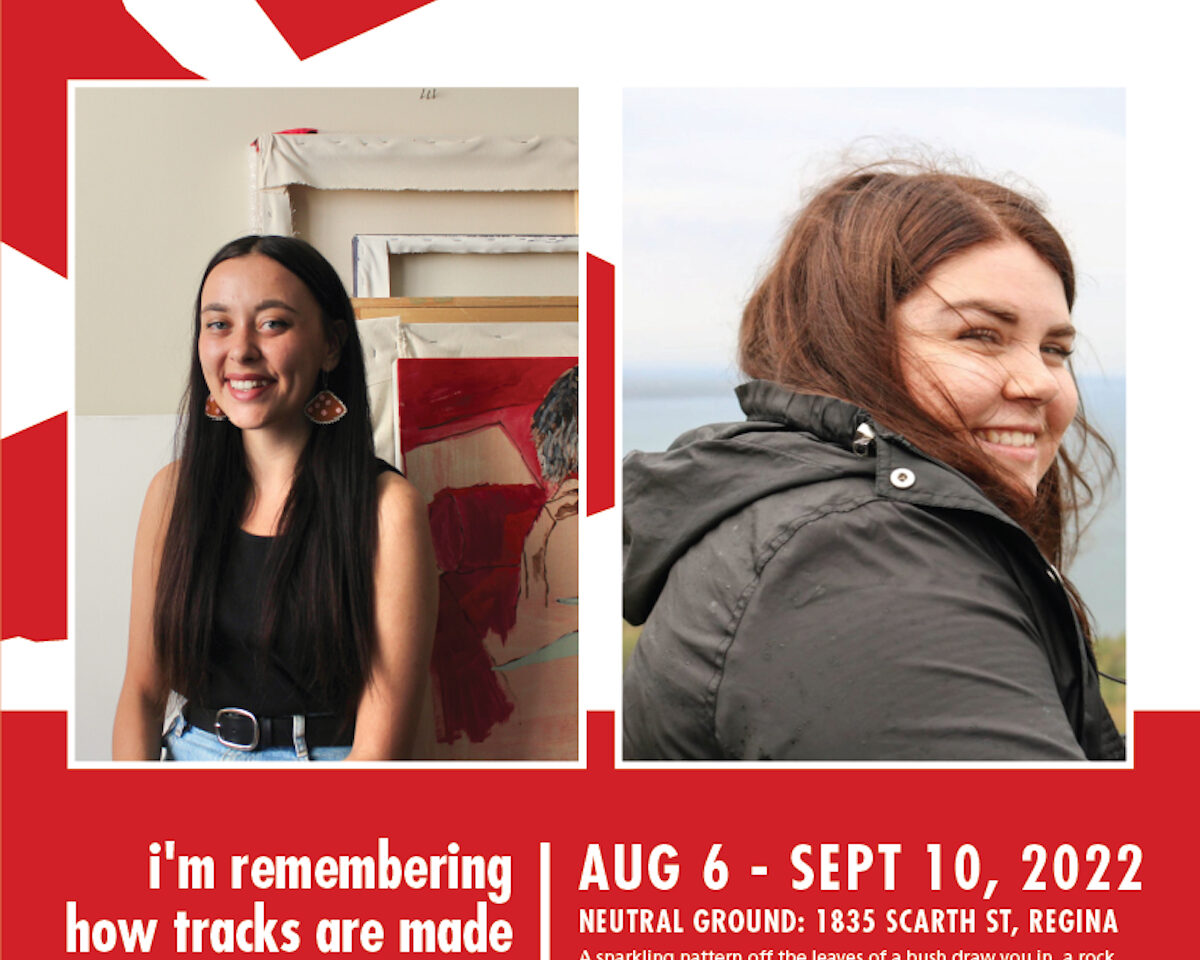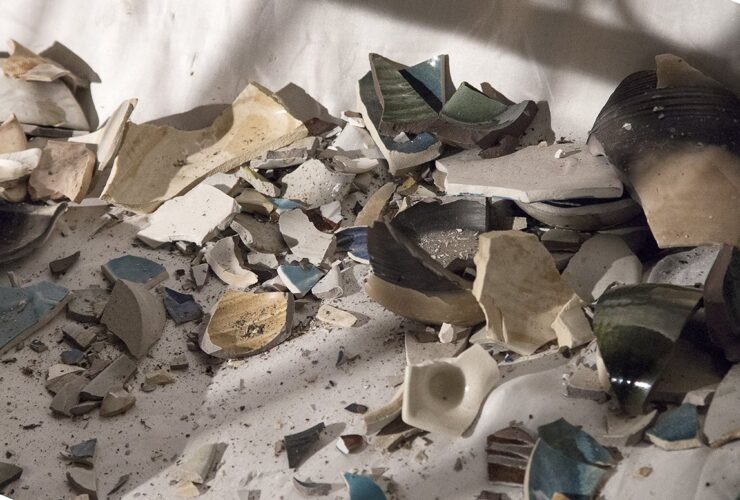Kiona Callihoo Ligtvoet
Megan Feheley
Curated by Holly Aubichon
August 6 – September 10 | 2022
Presented by: Sâkêwêwak, Artists’ Collective
i’m remembering how tracks are made
A sparkling pattern off the leaves on a saskatoon bush draw you in, a rock with alike armature to a beach lounger invites you to sit, and in front of you – the water rises and falls from the shore inviting you to listen. There is no stronger truth than feeling the presence of your kin. They must feel the same way, it feels so immediate to be welcomed that way. That seat was made for you. You sit. Inhale, “I found them”, exhale, “they found me”.
– Holly Aubichon
Through kin, Indigenous cultural practices are inherited from one generation to another. Kinship systems tend to family preservation, community connectedness and transmission of culture. Recognizing the value of kin, including land, to Indigenous artistic practices also recognizes the legacy of our diversity and ways of being in relationship with them. Like the first time you were outside alone, and you heard or felt a nudge towards a direction, and you decided to listen. Now you’re on a track, the spot feels ethereal, and familiar. You’re not the first to be drawn to that spot. The energy of that spot gets stronger, and another person will be drawn to there.
Personal displacement is used to describe Ligvoet’s work “These are the Things”, she tunes the painting to play to a homesick body. She tends to the body, and additional weight of knowing the land that her relations return to, may be taken. Kiona who’s from Michel First Nation, her traditional land enfranchised through an illegal vote, offers a glimpse of her home through replicating materials, and relatives.
Do you feel yourself absorbing the moisture from the ground, as it soaks through the layers of your clothes? The earth tends to its kin this way, through the tracks, an inherited waypoint. Remembering the past in this way of inherited tracks echoes experiences from childhood, while we watch and observe people and the places our family takes us, our child bodies picked up on the tracks. Our bodies knew when the tracks were being followed or forgotten. There is a shared sentiment between the artists Megan Feheley and Kiona Ligtvoet, to honour their parent(s) with strides towards recovering kin and relationships on the land while considering the lives they are developing as urban-living artists. Urban Indigenous adults will see their traditional lands as a comfort, like home, and a pain source. A complicated blend of loss and gratitude accompany the works exhibited. The works depict both found objects and internally recognizable symbology.
Feheley’s ability to communicate care to the land through their work tends to climate disasters, the voice from Mother Earth who clearly speaks to us this way. With the loss of our lands, the health of the earth is weakening. By caring for human, spiritual and animal kin, Feheley responds to that feeling of retracing a track, and taking action to heal and strengthen Mother Earth in attempt to heal loss and erasure of Indigenous cultural knowledges.
Cree perspectives do not share in linear forms, it’s fluid, cyclical and runs into and over itself and that is how we know that the pull to these spaces, comes from our relations and their ancestral connection to collectively known spaces and privately recognized locations on the land. This history and reality manifests in a deep and complicated sense of gratitude and grief for a place that feels like a person.
We gratefully acknowledge our funders, Canada Council for the Arts, SKarts, SaskCulture, SaskLotteries and the City of Regina.
Kiona Callihoo Ligtvoet (she/her) is a multidisciplinary artist practicing in amiskwaciwâskahikan on Treaty 6 Territory. She grew up West of the city near the hamlet of Calahoo where she lived with her moshom and relatives on scrip land. Her family lines are Cree and Métis descending from Michel First Nation, as well as Dutch/ mixed European.
Kiona works in painting, printmaking, and drawing, recollecting personal stories of grief and tenderness. Her practice uses a non-linear telling of her memories through narrative work as a form of diaristic archiving. It draws from feelings of loss and enfranchisement, but also from deep belly laughter, and a gentle fondness for where the histories between herself and her family overlap and disperse.
Recent exhibitions have included sahkitok mistahi at Ociciwan Contemporary Art Centre (2021), and her solo show These Are the Things at Latitude 53 (2021). She co-curated the soil between plants with Making Space (2022), and just finished writing her debut graphic novel We Were Younger Once (2022).
Working alongside other artists in initiatives of community care, Kiona co-organizes Making Space in partnership with Sanaa Humayun. She likes visiting her moshom on the farm, and gossiping with her mom, relatives, and friends on the prairies!
Megan Feheley is a two spirit Ililiw (Cree) interdisciplinary artist and curator living and working out of Toronto, Ontario. They are currently working towards their BFA in Indigenous Visual Culture at OCAD University, and work predominately in sculpture/installation, beadwork, textiles, painting and video. Feheley’s art making is based in collaboration with community and land, with specific interests in knowledge transmission, resurgent material practices, environmental justice and decolonial approaches to art-making.


